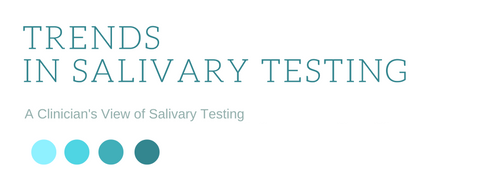Every April, there is a campaign to bring awareness to head and neck cancers. What exactly are head and neck cancers?
Head and neck cancers affect the mouth, throat, sinuses and nose, salivary glands, or larynx (the voice box). Their hallmark is that they involve squamous cells, which line the mouth, throat, and sinuses—those wet, mucous-rich surfaces.
How do head and neck cancers take hold?
Cancer cells are damaged cells that can live forever. Cancer requires one or more of these processes:
-
- Inflammation – malfunctioning cells from ongoing redness, swelling, and pain.
- Harmful byproducts – toxins from bad microbes that damage cells.
- Zombie cells – cells that don’t die when they should.
- Suppressed immune system – a weak immune system can’t destroy rogue cancer cells.
- DNA changes – UV light, toxins, radiation, or stress can mutate DNA.
- Weak microbiome – good bacteria normally defend against cancer; when weakened, they can’t.
Why do some people have pathogenic microbes but don’t get cancer?
HPV is a virus responsible for 70% of throat cancers. Almost everyone contracts it, but only 0.3–1.3% of infections develop into cancer—most people clear it. A healthy microbiome may prevent HPV from causing cancer. Other studies suggest good mouth bacteria help prevent head and neck cancers.
Possible explanations for asymptomatic infections include:
-
- Immune response
- Inflammation
- Dormant microbes
- Microbiome balance
- Microbial virulence
- Coinfections
Cancers are complex and multi-factorial. One actionable area is infection. Certain microbes are implicated, like Helicobacter pylori. HPV 16 and 18 are the most common high-risk types causing oropharyngeal, cervical, and penile cancers.
The oral microbiome and dysbiosis
The oral microbiome includes bacteria, fungi, parasites, bacteriophages, and viruses. Normally beneficial, these microbes can become pathogenic if the microbiome is imbalanced (dysbiosis), often from poor dental hygiene. Signs include:
-
- Cavities
- Bleeding gums
- Gum disease
- Bad breath
- Infections
- Tooth loss
Balance the oral microbiome to prevent cancer:
-
- Get Heal Your Oral Microbiome.
- Brush, floss, and get dental checkups.
- Get screened—some dental offices offer free screenings in April.
- Eat whole, fiber-rich, colorful foods.
- Eliminate sugar and refined carbs.
- Take chewable probiotics with Streptococcus salivarius.
- Test for oral HPV, dysbiosis, and pathogens.
- Test inflammation with hs-CRP.
- Stop smoking and drinking (including alcohol-based mouthwash).
- Use organic foods and non-toxic dental products.
- Optimize nutrition for immune support.
Testing helps detect harmful oral microbes before they cause damage.
OralDNA Labs’ OraRisk® HPV tests 50 HPV types linked to oral cancers. Other saliva tests screen for harmful bacteria. Consumers can now access oral microbiome tests to assess microbial balance and cancer risk.
This condensed version is adapted from Cass Nelson Dooley’s full blog. Cass offers a monthly newsletter on the oral microbiome, gut health, allergies, and toxins. Find more at Health First Consulting on our Protocol Directory.


